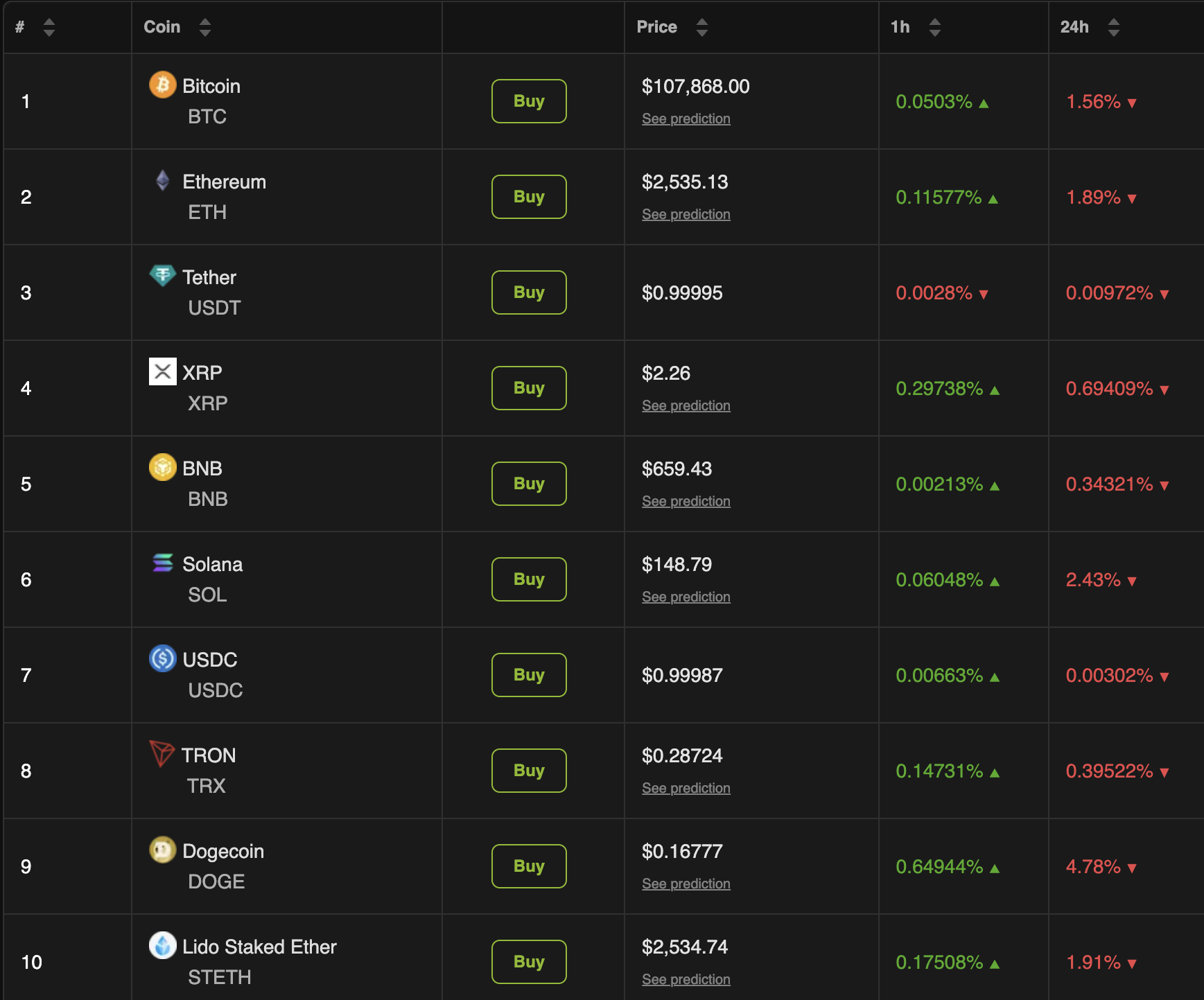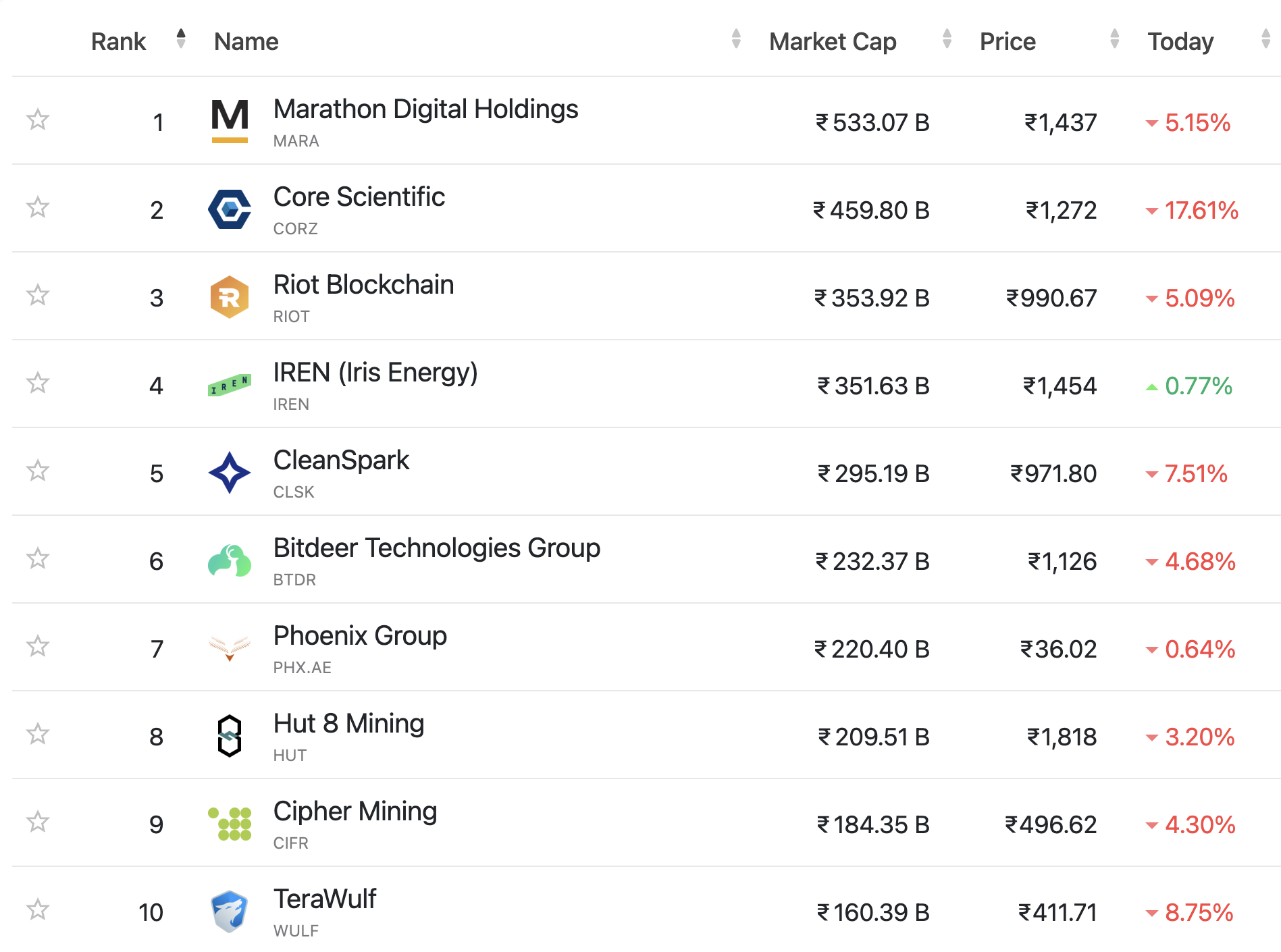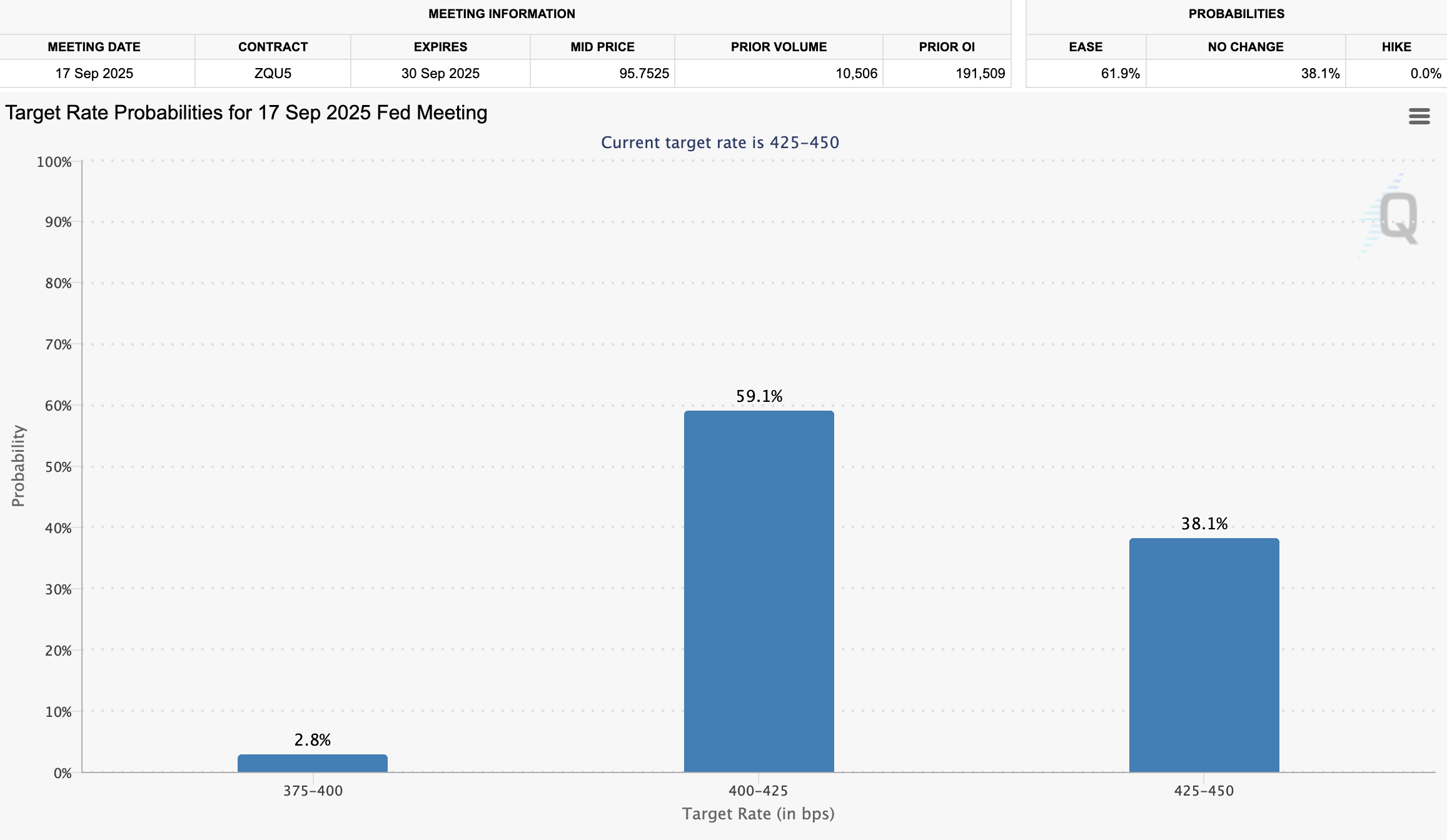Trump’s Tariff Bombshell Slams Crypto: Market Plunges 4.5% as Stocks Tumble in Sync
Markets reel as former President Trump’s tariff threats go nuclear—crypto isn’t bulletproof after all.
When the political hammer drops, even decentralized assets flinch. Bitcoin and altcoins bled alongside traditional markets, proving once again that crypto’s 'uncorrelated' narrative has more holes than a DeFi yield farm.
Wall Street’s usual suspects followed suit—because nothing unites traders like panic. Gold bugs and crypto maximalists both scrambled for cover, while the SEC probably drafted another 'I told you so' press release.
Lesson learned? In geopolitics, there are no safe havens—just varying degrees of pain. And for once, crypto and stocks agreed on something: nobody likes trade wars.
Crypto Market in Freefall Amid Trump’s Latest Tariff Letters
On July 7, President TRUMP sent tariff letters to 14 countries, imposing rates ranging from 25% to 40%. South Korea and Japan were the first to receive new letters. Shortly after, he sent nearly identical notices to 12 other countries.
These included Tunisia, Kazakhstan, Serbia, Bosnia, Myanmar, Laos, Bangladesh, Malaysia, Cambodia, Thailand, Indonesia, and South Africa.
![]() Trump's new imposed tariffs on countries so far:
Trump's new imposed tariffs on countries so far:![]() Japan: 25%
Japan: 25%![]() South Korea: 25%
South Korea: 25%![]() Malaysia: 25%
Malaysia: 25%![]() Kazakhstan: 25%
Kazakhstan: 25%![]() Tunisia: 25%
Tunisia: 25%![]() South Africa: 30%
South Africa: 30%![]() Bosnia: 30%
Bosnia: 30%![]() Indonesia: 32%
Indonesia: 32%![]() Bangladesh: 35%
Bangladesh: 35%![]() Serbia: 35%
Serbia: 35%![]() Cambodia: 36%
Cambodia: 36%![]() Thailand: 36%
Thailand: 36%![]() Laos: 40%
Laos: 40%![]() … pic.twitter.com/0REQAdIuhS
… pic.twitter.com/0REQAdIuhS
“US Treasury Secretary Bessent says over 100 countries did not respond to US tariffs with trade deals. All of these countries are expected to receive tariff letters,” The Kobeissi Letter revealed.
In the letters, Trump expressed concern over the trade deficits the United States has with these countries. He also warned that any retaliatory actions WOULD be met with further tariff increases.
Economist Peter Schiff criticized the move, stating that Trump’s letters reflect a fundamental misunderstanding of trade. He argued that tariffs are not connected to America’s trade deficits with Japan or South Korea.
“Japan’s tariffs on US goods average less than 2%, and Korea’s average less than 1%. Our trade deficits result from South Korea and Japan making more goods that Americans want to buy than the goods we make that they want to buy. Trump’s 25% tariffs will have a minimal effect on our trade deficits with either nation. In fact, as the dollar falls, our trade deficits will likely rise in dollar terms, as we pay more to import less,” Schiff said.
Nonetheless, Trump’s tariff imposition proved detrimental to the crypto market. BeInCrypto data showed that the total market capitalization fell 4.5% over the past day. All the top ten coins were in red.
Bitcoin (BTC) dropped 1.56% below the $108,000 mark. At the time of writing, it traded at $107,688. ethereum (ETH) plunged 1.89% to a press time value of $2,535. Dogecoin (DOGE) saw the biggest loss of 4.78%.

In addition to the coins, crypto-related stocks also suffered. Google Finance data showed that MicroStrategy Class A stock MSTR closed the market with a 2% dip, while Robinhood was down 1%. Furthermore, bitcoin miners’ stocks saw larger declines.

The tariff letters also affected the US stock market. CNN data revealed that the Dow Jones was down by 422.17 points, the S&P 500 fell by 49.37 points, and the NASDAQ declined by 188.59 points.
“It’s like clockwork: Trump’s ‘tariff letters’ go out, and the 10Y Note Yield is back to 4.40%. Yields are just ~20 basis points below the highs seen when President Trump announced a 90-day tariff pause. We have reached a point where yields are rising regardless of the trade war situation. Deficit spending has completely taken control of long-term rates. The market is crystal clear,” The Kobeissi Letter posted.
Meanwhile, the drop in crypto and stock markets mirrors past instances of tariff-related volatility. In April, the US-China trade drove Bitcoin below $80,000, causing massive liquidations.
With the new tariffs set to go live on August 1, expecting further declines is not far-fetched. In addition, the low probability of Fed rate cuts could fuel bearish sentiment. BeInCrypto reported previously that the odds fell to below 5% for a rate in July.
The tariff letters have now impacted the odds for September. According to the CME FedWatch Tool, the chances of a rate cut by September have declined to 61.9%, marking a huge drop from 90% just two weeks ago.

All these factors, Trump’s new tariffs, the market’s negative reaction, and shifting expectations around Fed rate cuts, combine to create an environment of increased uncertainty.

